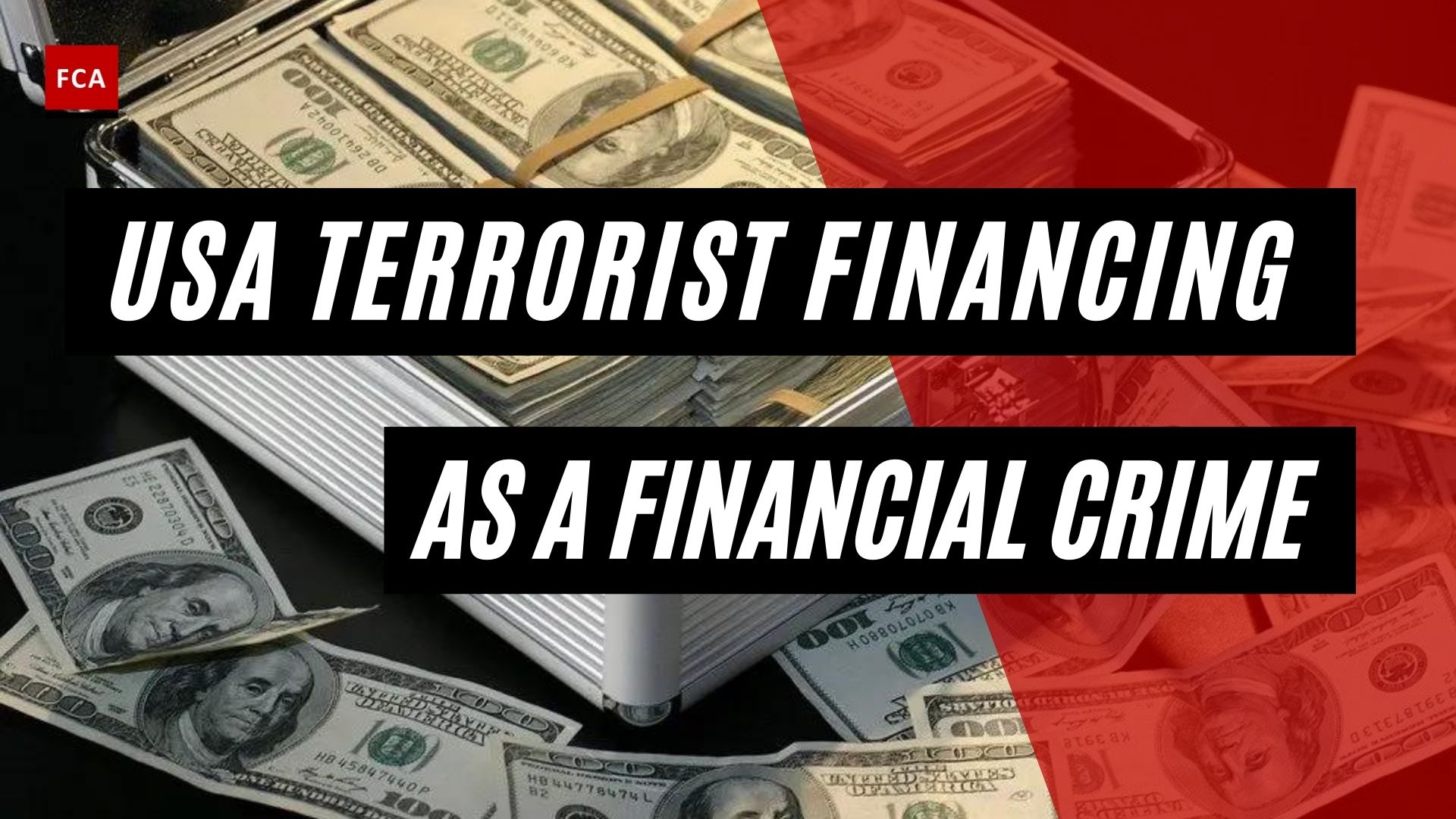Terrorist financing refers to the methods used by terrorists to generate and move funds to support their activities, such as planning and carrying out attacks, purchasing weapons and equipment, and maintaining their infrastructure.
Terrorist groups may raise funds through a variety of sources, including donations from sympathetic individuals, businesses or charities; illicit activities such as drug trafficking, kidnapping, and extortion; and state sponsors. They may also use legitimate businesses and charities to conceal their activities.
To combat terrorist financing, many countries have implemented measures such as anti-money laundering laws, regulations on non-profit organizations, and sanctions on individuals and entities suspected of supporting terrorism. International cooperation and information sharing are also crucial to disrupting terrorist financing networks.

The Relation of Terrorist Financing to Environmental Crimes and Examples
Participation in illegal trading by terrorists is about more than just making money. It accomplishes various goals, including the oblivion of history, the lowering of community morale, the erosion of social cohesion, and the harm to people’s health and well-being. Additionally, it supports the social services provided by terrorist organizations.
According to a from the United Nations and INTERPOL, operations oriented around the exploitation of natural resources and environmental damage are growing in importance and enriching terrorist and international criminal organizations. After narcotics, guns, and people trafficking, illicit mining, forestry, and garbage disposal have grown to become the fourth-largest criminal industry in the world.
Terrorists concentrate on various illegal trade that offers great profits at minimum risk. They deal illegally in gold, cigarettes, and other natural resources like coltan and charcoal. In order to survive, terrorists, like transnational criminal organizations, another important category of nefarious non-state actors, expanded their illegal goods. For instance, the FARC reportedly generated more money from illicit gold mining than it did from selling drugs.
IUU fishing is a component of a vast network of international criminal operations rather than taking place in a vacuum. IUU fishing boat aid in facilitating other illicit activities, including smuggling drugs, people, and weapons. Smuggling and human trafficking are profitable industries. These horrible trafficking operations have an impact beyond the region in which they take place since the money they generate might be used to support terrorist actions all over the world. For instance, smuggled narcotics used to fund the 2004 al-Qaida terrorist attacks in Spain, and illegal fishing has grown to be a significant source of cash for al-Shabab.
Various sources have estimated the yearly value of the illegal trade in flora and fauna, excluding fisheries and wood ranges. Somalia boasts Africa’s longest coastline and a plethora of maritime resources. However, Somalia’s attempts to fully use the productive capacity of these resources have been hampered by poor governance, a lack of infrastructure, and illicit, unreported, and unregulated IUU fisheries by foreign nations.
Local fishermen have been forced to resort to piracy because of the overfishing caused by IUU vessels, which has diminished the domestic catch. Terrorist activities by Al-Shabaab increased in tandem with the rise in piracy. Although these two entities have separate goals, the two have converged due to the utilization of proceeds from piracy to finance terrorist activities.
Illegal logging is projected to cost African countries 17 billion US dollars annually. This is a piece of a worldwide market with a 30 to 150 billion US dollar market value. According to estimates, Africa’s illicit charcoal trade alone generated a net profit of up to 9 billion US dollars.

Threats to national security from violent extremist groups and criminal enterprises have also increased as a result of timber trafficking. For instance, in 2019, it was estimated that illicit logging was bringing in 2 million US dollars per month for trafficking networks in Tanzania and the Democratic Republic of the Congo that were tied to the Ahlu-Sunnah Wa-Jama and other militant organizations in Mozambique.
According to the research, one terrorist organization operating in East Africa is thought to earn between 38 and 56 million US dollars annually from the illicit charcoal trade. Militia and terrorist organizations may receive between 111 and 289 million US dollars yearly through their participation in and taxation of the illicit or unrestricted charcoal trade in and around African countries with ongoing conflicts.
Other organizations that profit from the illegal trafficking in wildlife and timber product lines are also estimated to make between 4 and 12.2 million US dollars annually from the sale of elephant ivory in the Central Africa sub-region, which contributes to a sharp decline in elephant populations throughout Africa.
The illegal wood trade can contribute to conflict and instability by giving resources to violent individuals and encouraging corruption. Timber smuggling was one of warlord Charles Taylor’s main funding sources during the Liberian civil war. Additionally, it made it easier for Taylor to help the Revolutionary United Front close by Sierra Leone.
International wood traders paid the Seleka rebel group at least 3.4 million euros in security payments to maintain their activities in the Central African Republic or CAR between 2013 to 2014. This promoted the rebels’ presence and made arms trafficking easier. Anti-Balaka militants were paid to provide safety after the Seleka lost control.
The connection between crime and security issues is also unique. Nellemann observed that 7 million people have died in the protracted violence in the Democratic Republic of the Congo, which is increasingly perceived as a struggle fueled by criminal interests rather than a political uprising. Resources there are exploited for 722 million to 862 million US dollars yearly. Only 2 percent of that is allocated to armed combatants; organized criminals pocket the remainder.

Final Thoughts
Environmental crimes, such as illegal wildlife trafficking, illegal logging, and illegal fishing, can generate significant profits for organized crime groups. These profits can then be used to finance terrorist activities or other criminal enterprises. In this sense, environmental crimes can indirectly contribute to terrorist financing. Furthermore, some terrorist groups have been known to engage in environmental crimes themselves to generate funds.
For example, the Islamic State in Iraq and Syria (ISIS) has been accused of engaging in the illegal trade of antiquities and looting of archaeological sites in Syria and Iraq to fund their activities. It’s important to note that terrorist financing is a serious criminal offense that is distinct from environmental crimes. While the two may be linked in some cases, they should be addressed separately through effective law enforcement, intelligence gathering, and international cooperation.








